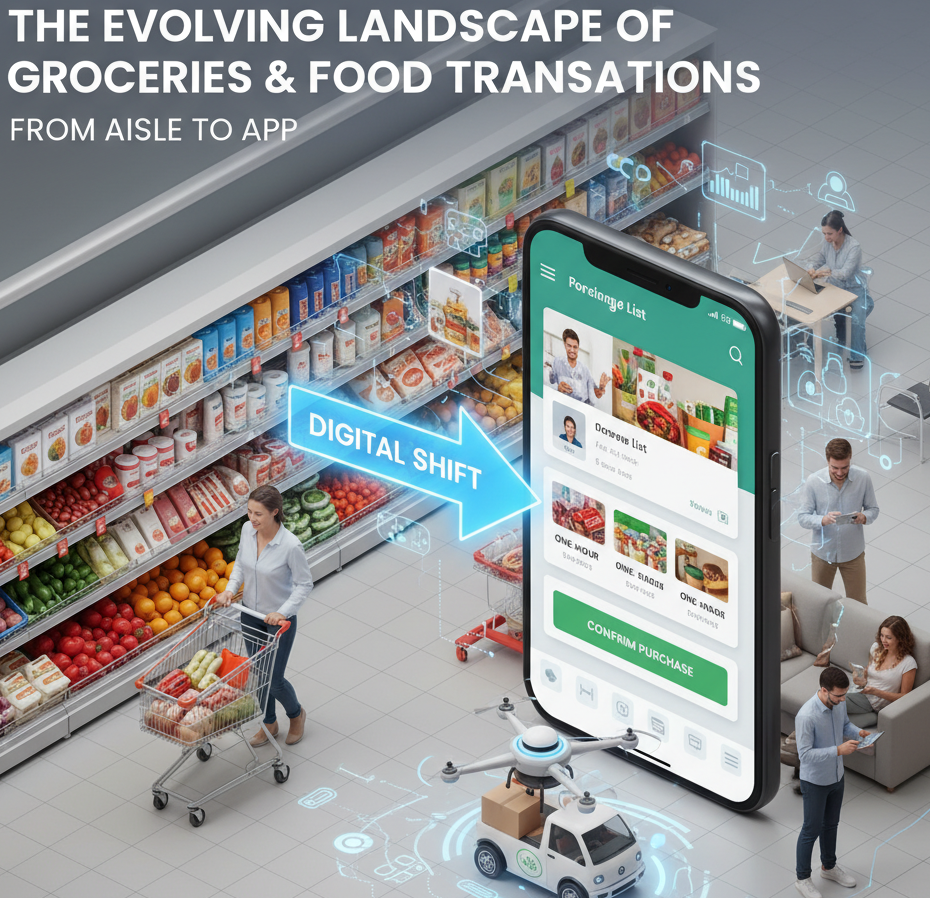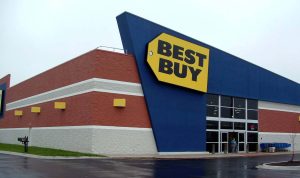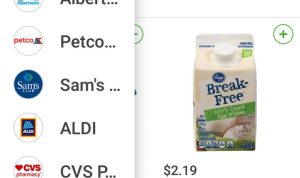The way we buy food has changed dramatically. Once a simple routine of walking down aisles with a shopping cart, the act of purchasing groceries and food has transformed into a complex, multi-faceted experience. This evolution is driven by technology, changing consumer habits, and a constant demand for convenience and speed. The groceries & food sector is a dynamic marketplace, and understanding its key trends is crucial for both businesses and consumers.
The Rise of Digitalization: The “Aisle-to-App” Revolution
The most significant shift in food transactions is the move towards digitalization. Online grocery shopping, once a niche market, has become a mainstream staple. The COVID-19 pandemic accelerated this trend, but its roots run deeper, fueled by the promise of convenience and efficiency.
E-commerce platforms and dedicated grocery apps now allow consumers to browse thousands of products from the comfort of their homes. This digital storefront offers several advantages:
- Convenience: No more commuting, searching for parking, or navigating crowded aisles. Shoppers can place orders anytime, anywhere.
- Time-Saving: The time spent on physical shopping is drastically reduced, freeing up valuable hours for other activities.
- Better Deals: Online platforms often feature exclusive discounts, digital coupons, and personalized promotions based on a customer’s purchasing history.
- Detailed Information: Consumers can easily view product details, nutritional information, and customer reviews, helping them make more informed choices.
This digital transformation has also created new business models, from large-scale online supermarkets to specialized local delivery services. The groceries & food industry is now a battleground of giants and agile startups, all competing for a share of the digital wallet.
The Power of Data: Personalization and Predictive Shopping
Behind the scenes of this digital revolution is the power of data. Every click, every search, and every purchase provides valuable insights into consumer behavior. This data is not just used for targeted advertising; it’s being used to create a more personalized and predictive shopping experience.
- Personalized Recommendations: Algorithms analyze past purchases and browsing history to suggest products a customer is likely to buy. This “you might also like” feature is a powerful tool for increasing basket size and enhancing the customer experience.
- Predictive Shopping Lists: Some advanced platforms can even predict what a consumer might need based on their typical purchasing cycle. For example, if a family buys milk every week, the app might automatically add it to their shopping list.
- Dynamic Pricing: Data allows businesses to implement dynamic pricing strategies, offering discounts on products that are about to expire or during off-peak hours, reducing waste and increasing sales.
For businesses, leveraging data is key to staying competitive. It helps them optimize inventory, streamline logistics, and create more effective marketing campaigns. For consumers, it means a more tailored and efficient shopping journey.
The Convenience Economy: Instant Gratification & On-Demand Delivery
The modern consumer demands instant gratification. This desire for speed has given rise to the on-demand delivery model, where groceries and ready-to-eat meals can be at your doorstep within an hour or even minutes. This trend is not just about convenience; it’s about making food available whenever and wherever it’s needed.
- Rapid Delivery Services: Companies specializing in “quick commerce” promise delivery times as short as 15-30 minutes, relying on a network of small, strategically located urban warehouses (dark stores).
- Meal Kits: For those who want to cook but lack the time for meal planning and shopping, meal kit services deliver pre-portioned ingredients and recipes directly to their homes.
- Restaurant Delivery: The line between grocery shopping and restaurant dining is blurring. Apps like Uber Eats and DoorDash have made it easier than ever to get a meal from your favorite restaurant delivered in minutes.
These services cater to a fast-paced lifestyle, appealing to busy professionals, students, and anyone looking to simplify their daily routine. The groceries & food sector is no longer just about selling products; it’s about selling time and convenience.
The Farm-to-Table Movement & Sustainable Transactions
Amidst the high-tech trends, there’s a powerful counter-movement rooted in tradition and sustainability. The farm-to-table movement emphasizes local, fresh, and ethically sourced food. This trend is driven by a growing consumer awareness of health, environmental impact, and support for local communities.
- Direct-to-Consumer Models: Farmers and local producers are increasingly using online platforms and subscription boxes to sell their products directly to consumers, bypassing traditional supermarkets. This ensures fair prices for producers and fresh products for buyers.
- Sustainable Packaging: Consumers are demanding less plastic and more eco-friendly packaging. Businesses that adopt sustainable practices gain a competitive edge and build brand loyalty.
- Ethical Sourcing: There’s a rising demand for products with clear traceability, from “fair trade” coffee to ethically raised meat. This transparency builds trust and empowers consumers to make responsible choices.
This shift towards conscious consumption proves that while technology is a powerful driver, fundamental values like quality, health, and sustainability remain at the heart of the groceries & food industry.
The Future of Food Transactions: A Glimpse into Tomorrow
The future of groceries and food transactions promises to be even more integrated and seamless. We can expect:
- AI and Voice Commerce: Imagine telling your smart home device, “Order my usual groceries,” and the transaction is completed automatically.
- Drone and Autonomous Vehicle Delivery: Soon, your groceries might arrive not by a delivery person, but by a drone or a self-driving vehicle.
- Hyper-Personalization: The use of biometric data and personalized health metrics to recommend food that fits a person’s specific dietary needs and goals.
- Virtual and Augmented Reality: Shoppers could one day use AR to “see” products in their kitchen or VR to “walk” through a virtual farmers’ market.
In conclusion, the groceries & food sector is undergoing a profound transformation. From traditional brick-and-mortar stores to sophisticated digital ecosystems, the way we buy food is constantly evolving. For businesses, embracing technology, leveraging data, and staying attuned to consumer needs for convenience and sustainability will be key to success. For consumers, the future promises a more personalized, efficient, and ethical way to fill their pantries and satisfy their appetites.











